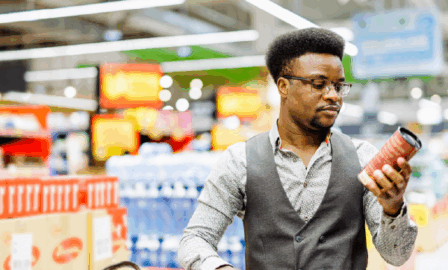4 Steps to Experiential Marketing in Food
Experiential marketing creates a way for food companies to engage consumers with the brand, reach new audience segments, and build greater brand awareness. It can also provide the perfect mechanism to gather invaluable customer data and feedback. With consumers continuing to seek experiences over things, experiential marketing sits at a perfect intersection for food companies looking to play into that trend. By making your company’s values, beliefs, and offerings come to life in a physical space, branded experiences connect the consumer with your company on a deeper level.
1. Keep the “experience” in experiential marketing.
In a time where consumers are spending more time online and engaging with brands through digital channels, experiential marketing can give food companies the opportunity to bridge the physical and digital worlds. Consumers continue to seek out “Instagrammable” moments – moments that foster interaction and prompt consumers to share the experience with their network. Consider how you can immerse the consumer. Think about the five senses and how you can use them to engage the consumer and create a true experience.
Example: At this year’s South by Southwest Conference, food company Land O’Lakes sponsored The Copernicus Project, a fully immersive and fully interactive experience in a 6,000 square foot space aimed at educating attendees in a dynamic and eye-catching way. The experience included slides, ball pits, and more – all paired with a narrative to educate attendees on the world of agriculture.
2. Target and tailor.
A critical step to creating a successful experiential marketing event is by identifying your target audience and tailoring the event to engage them effectively. For consumers, the key barometer for success will be how the experience speaks authentically and directly to their wants, tastes, and needs. It’s critical to understand how your brand or product connects to your consumers on an emotional level and then use that connection in the spirit of your event.
Example: Lean Cuisine’s 2016 #WeighThis event in Grand Central Station asked passersby how’d they prefer to weigh themselves beyond pounds and ounces and then had participants write their responses on scales. Some responded with personal accomplishments, relationships, or successes in their life outside of weight loss. With this demonstrative understanding to the struggles of weight loss, the diet meal manufacturer showed an authentic appreciation for their consumers while garnering more than 200 million impressions across various channels.
3. Consider potential partners.
Partnering can help reposition your brand to a new audience while adding another dimension to your brand identity. Consider if partnering for an experiential marketing event with other brands or social media influencers aligns with your company’s image and business goals. A larger brand could extend your overall reach, while a smaller brand might have access to niche groups of consumers.
Example: To promote Flamin’ Hot Cheetos, the chipmaker partnered with celebrity chef Roy Choi in 2018 to open Flamin’ Hot Spot, a Cheetos-themed restaurant. The entire menu for the 3-day restaurant feature Choi’s signature fusion style using Flamin’ Hot Cheetos in each dish. The concept followed the same model as an NYC-based Cheetos-themed restaurant, The Spotted Cheetah with celebrity chef Anne Burrell. For Cheetos, the brand was able to elevate the conversation around its snack product and excite consumers – with positive results too as reservations for the restaurant sold out nearly instantly.
4. Make it different.
As experiential marketing becomes more ubiquitous, it’s crucial for brands to take risks in order to differentiate. As consumers become more accustomed to some of the traditional experiential marketing tactics, such as pop-up stores, think about how your brand can reach the consumer in an unexpected way while still maintaining the spirit of your brand. In an age where various channels are constantly competing for consumer attention, your experiential event has to stand out.
Example: Candy brand Skittles forewent a traditional Super Bowl ad this year and instead invested resources into a fully-produced Broadway show starring actor Michael C. Hall. The one-night-only show, titled Skittles Commercial: The Broadway Musical, included all of the mainstays of Broadway – costumes, songs, merchandise, and even a specially produced Playbill. The colorful event, while well outside the norm for a candy company, resonated with the Skittles brand identity as playful, sarcastic, and humorous. The event also served as a platform for charity as the proceeds went to benefit Broadway Cares/Equity Fights AIDS.
Experiential marketing helps you reach new consumers and reinvigorate your brand. The rise of social media and other new technologies has broadened the possibilities of what an event can be and how far it can reach. As you tap into experiential marketing as an arm of your brand strategy, consider how you can use the resulting data and analytics to better understand your consumers, inform future events, and find new avenues to reach consumers.
Subscribe to Clarkston's Insights
Coauthor and contributions by Sabrina Zirkle


